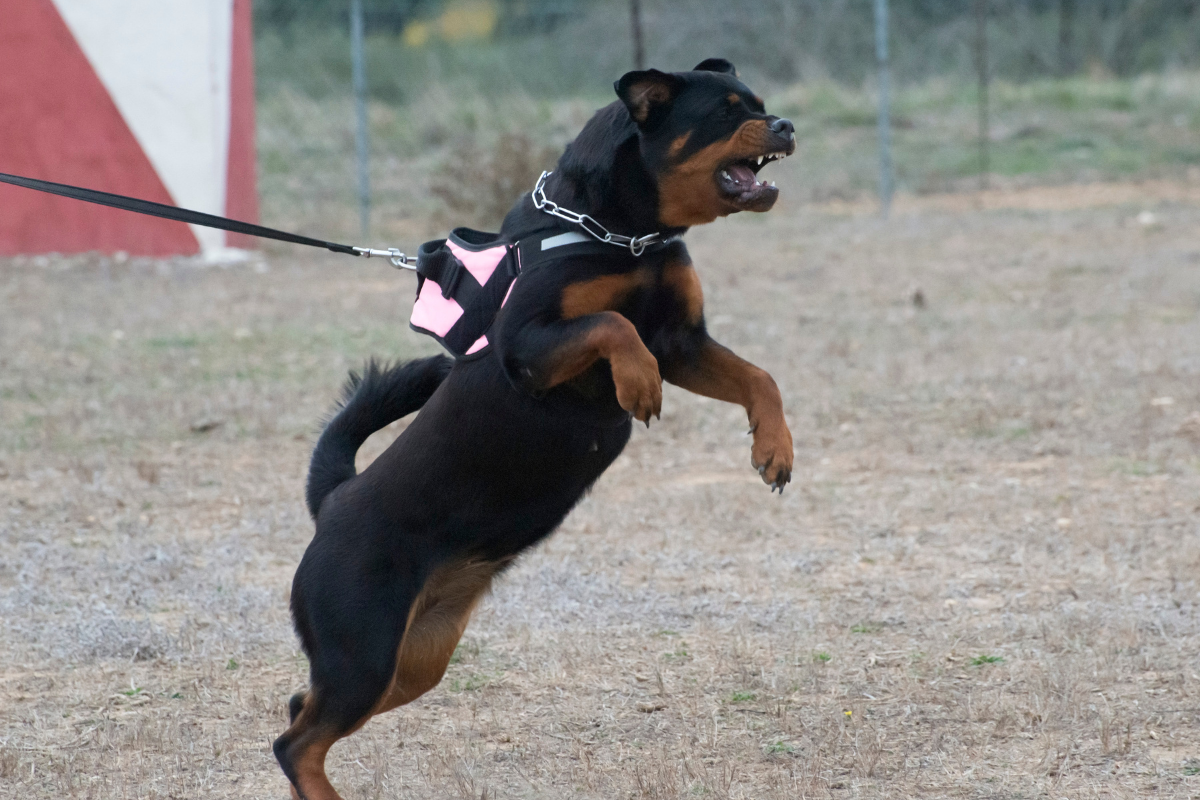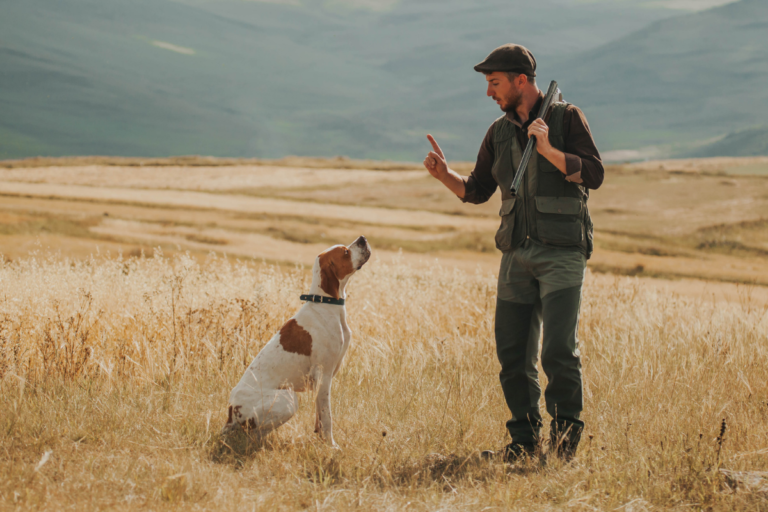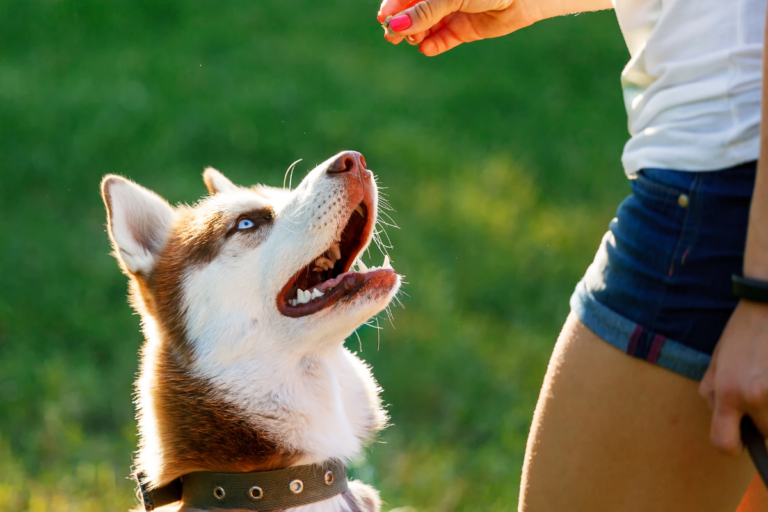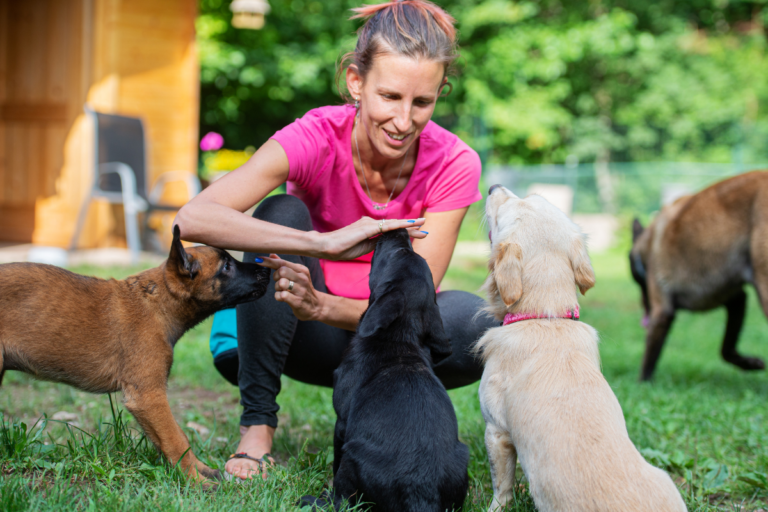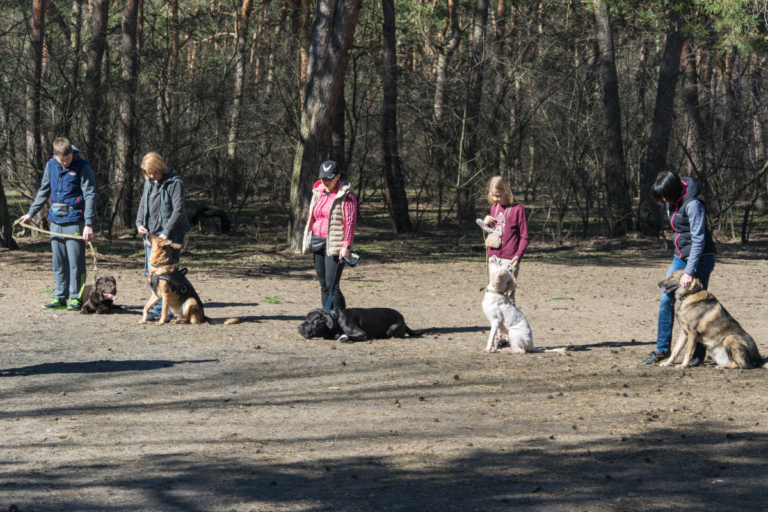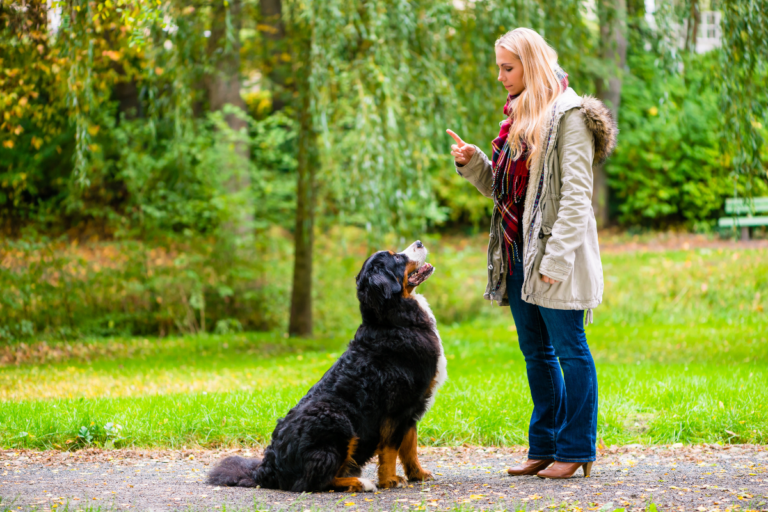Creating Harmony at Home: Proven Methods for Aggressive Dog Training.
Effective Dog Training Techniques
Training our dogs is like teaching them the secret handshake of our family — it’s all about strengthening bonds and making sure they grow up to be superstar companions. It’s not just about obedience; it’s about having a giggle together and keeping things calm at home.
The Magic of Positive Reinforcement
Positive reinforcement is basically like bribing our dogs with goodies to encourage repeat performances of things we like — think of it as the ultimate “good boy” sticker. When we say good boy and toss over a treat, or bring out their fave squeaky toy whenever they nail a sit or stay, we make them want to do it again. This approach isn’t about control, it’s more like creating a mutual understanding and a relationship packed with trust and wagging tails.
Here’s how it works: we dish out the good stuff when they do what we want, whether it’s taking a seat on command or mastering complex stuff like becoming a K9 unit or fetching those autumn leaves like a champion gundog.
| Reward Type | Examples | Effectiveness |
|---|---|---|
| Treats | Little nibbles | Sky-high |
| Toys | Balls, squeakers | Pretty good |
| Praise | Words of admiration, head rubs | Pretty good |
| Activities | Game of fetch, strolls | Top-notch |
By sticking with positive vibes, we steer clear from harsh rules. No hitting, yelling, or intimidation tactics that make dogs all jittery and defensive. A happy dog is a well-behaved one.
Getting the Most Out of Rewards
Rewards are like the Swiss Army Knife of dog training—versatile and oh-so-effective. Depending on what makes our dogs’ tails wag, we’ve got options ranging from munchies to toys to a good-old “atta boy” during training.
Treats typically top the charts because, let’s face it, most dogs are glorified foodies. Smaller snacks are gold in training sessions as they’re quick to munch on and keep the energy up without filling them up.
| Training Scenario | Ideal Reward Type | Notes |
|---|---|---|
| Basic Commands (e.g., “sit”) | Tiny bites of goodness | Say good stuff quick to cement learning |
| Advanced Training | Playful items or jaunts | Excites and challenges them |
| Tough Love Corrections | Sweet nothings and pats | Strengthens bond through understanding |
Timing is everything here. Dishing out the rewards right after they do the trick means they’ll know exactly what they did right. Nail this, and you’ll not only sidestep grumpy behavior, but you’ll also be reinforcing calm, cool, and collected vibes.
Ready for school? Regular sessions, like dog classes or puppy clubs, set up a solid space for consistent pupper learning. If things get tricky, a trainer might be your go-to, with special programs ready to tackle any naughty antics or flair up epic dog skills.
In celebrating the good and using rewards wisely, we’ll have dogs that listen, behave, and just love every moment in our shared space. For more sage advice, check out our other posts on managing reactive dogs and picking the easily trainable breeds.
Fundamentals of Positive Reinforcement Training
Positive reinforcement isn’t just about tossing treats around—it’s a kinder, smarter way to teach our pooches right from wrong, especially when navigating the turbulent waters of aggressive dog training. We’ll break this down into the simple bits here.
Timing in Positive Reinforcement
Timing is crucial—you gotta be quick on the trigger! Rewards should hit the spot the second your furball performs correctly. If you toss that treat a little too late, good luck making the connection. Kind of like dancing; miss a beat, and you’re out of sync.
Instant feedback is key. Suppose we’re teaching Fido to sit; hand over the treat as soon as his tush hits the floor. Any delays could have him scratching his head, wondering what he did to deserve a snack.
Consistency in Commands and Rewards
Keeping it consistent is where the magic happens. Everyone with a say over your furry friend’s actions needs to be on the same page. It’s like a family band; if one hits a sour note, the whole thing sounds off.
| Correct Command | Incorrect Command |
|---|---|
| “Sit” | “Sit down” or “Please sit” |
| “Stay” | “Stay there” or “Don’t move” |
Inconsistent commands throw dogs off their game faster than a squirrel in the backyard. Rewards should only go to good behavior, no sideline treats for when they’re naughty. Sticking to this trains them up fast and steady (Humane Society).
Choosing the Right Rewards for Dogs
Picking the right bribe—I mean, reward—is a game changer. Most pups go crazy for snacks, but others might light up at a high-pitched “Good dog!” or getting their belly rubbed.
Get to know what makes your pooch tick. Some might drool over chicken bits, while others are all about fetch. Reel in those high-value rewards—that rare chicken bit—and watch ‘em work for it. This tweak makes the whole training shindig way more effective.
| Reward Type | Example |
|---|---|
| Food Treats | Munchy bits of chicken or cheese |
| Praise | A hearty “Good dog!” |
| Petting | Belly rubs or ear scratches |
| Toys | A cherished squeaky or ball |
Getting those “aha” moments requires understanding, consistency, patience, and a fair bit of repetition. For a deeper dive into techniques, visit our dog training classes.
By harnessing these basics, we create a zen-like home and tackle those pesky behaviors head-on. Need more tricks or wisdom? Swing by our aggressive dog training page.
Behavior Modification in Aggressive Dogs
Dealing with an aggressive dog can feel like trying to dance with a porcupine. Our goal is to arm dog lovers, trainers, and anyone with a bit of canine craziness in their life with a toolbox stuffed with practical tricks to handle these prickly situations.
Understanding Aggression Triggers
Aggression in dogs often feels like an algebra problem we didn’t sign up for, but understanding what’s causing them to fly off the handle is key to calming the chaos. Things like being a wallflower when they would’ve been better off as the class clown, too many pins and needles from scary past experiences, or even just a little mischievous code hidden in their DNA recipe can draw out their barks and nips. Ever notice how a rescue pup might get jittery around new folks or furry friends? That’s fear-based aggression, waving a big ol’ flag saying, “Help me feel safe!”
Our job is to spot these triggers and work our magic to ease those wild reactions, turning their Hulk moments into Clark Kent calmness.
Identifying Signs of Aggression Issues
Catching the signals of aggression early on is like spotting the iceberg before the Titanic takes a nosedive. You see a pooch that’s barking up a storm? Tugging on the leash like it’s a tug-of-war championship? Maybe even giving nips, growls, or blocking your path like they’re a bouncer at a doggie club? If your answer’s yes, your furry buddy might be past slightly grumpy and well into ‘we need to chat’ territory.
Quick Guide to Reading Rover’s Reactions:
| Behavior | What’s Happening |
|---|---|
| Barking | Talking the doggy talk, loudly |
| Straining | Putting your arm workout to the test |
| Biting/Nipping | Trying out those teeth – and not gently |
| Growling | The dog version of “back off” |
| Resource Guarding | Your pal’s version of “mine!” |
| Mounting | Playing king of the mountain |
| Path Blocking | Becoming a furry roadblock |
Addressing Aggressive Behaviors
So, you’ve got a furry bundle of dynamite – what next? Time to roll up those sleeves and dive into a game plan that looks something like this:
- Positive Reinforcement: Sprinkle good vibes to turn grumpy growls into wagging tails. Think treats, cheers, and belly rubs – whatever tickles their fancy.
- Desensitization and Counterconditioning: Teach them to chill out when faced with their bugaboos by slowly getting them used to the triggers while rewarding calmness.
- Consistency: Everyone – from your Grandma Edna to your pals – needs to be on the same page. No mixed signals allowed!
- Professional Assistance: It never hurts to call in the dog whisperers – certified trainers or behavior pros might just be the secret sauce you need to calm the storm.
Getting inside your dog’s noggin helps in turning turmoil into triumph and strengthens those unbreakable bonds. And hey, you’ll better understand what makes your four-legged friend tick (Source).
Still hungry for tips? Check out our other reads on k9 dog and gun dog training to keep expanding that canine training know-how.
Professional Assistance in Aggressive Dog Training
Seeking Help from Certified Trainers
When our furry pals turn a bit feisty, getting a certified dog trainer in the mix can be a game-changer. These folks know their stuff, armed with the know-how to tackle those naughty behaviors using some good old positive vibes (PubMed).
Certified trainers stick to what’s called the Least Intrusive, Minimally Aversive (LIMA) guidelines – a fancy way of saying they’re gentle yet effective. They’ll take a good look at your pup’s antics without wagging a finger, helping suss out why Spot’s feeling spicy (Aggressive Dog).
When you’re hunting for the right trainer, keep your eyes peeled for:
- Creds and Certs: You want someone who’s got bona fides from a legit group.
- Aggressive Dog Know-How: Find a trainer who’s handled the growlers before.
- Positive Vibes Only: Ensure they’re all about rewards and not raps on the nose.
For a little more scoop on training options, hop over to our section on dog training classes.
Collaborating with Behavioral Consultants
Sometimes it’s not just a training issue, and we need a behavioral whiz in our corner. Behavioral consultants dive deep into the brain of your barky friend, helping figure out what’s setting them off or causing their tantrums (Ancillary K9).
These pros whip up tailored plans that fit your dog’s needs like a glove, with goodies like:
- Behavior Evaluations: They’ll do a CSI-level investigation into what’s winding up your pooch.
- Made-just-for-you Plans: Custom strategies to mellow out the barky behavior.
- A Helping Hand: Guidance and cheerleading every step of the way to pet peace.
Stick with it, be patient and consistent – it’s the secret sauce to getting that training to stick. Often they’ll team up with the dog trainers for a full-circle approach to turn that growl into a grin.
Snag more info on personalized training routines over at our puppy training classes.
By pulling in help from certified trainers and swapping notes with behavioral consultants, we can keep our homes purring along smoothly. For more goodies and ideas, peek at our reads on reactive dogs and blue dog training.
Strategies for Managing Aggression
Handling a dog’s aggression isn’t a one-size-fits-all affair. It’s about mixing their need for physical activity, mental challenges, some behavior tweaking, and endless patience. Taking these steps will help us tame that wild streak in our pups and ensure everyone at home can breathe easy.
Influencing Calm with Tiring Fun
You won’t catch a break trying to tackle aggression without some good ol’ exercise. Every dog wants different things from their playtime, and knowing what makes them happy can squash that snarl into a tail wag. Imagine owning a German Shepherd or a Labrador – these guys need plenty of action to steer clear from grumpy outbursts.
So, here’s a quick cheat sheet to keep them off your couch and away from trouble:
| Breed | How Much Playing They Need (minutes/day) |
|---|---|
| Labrador Retriever | 60 – 90 |
| German Shepherd | 90+ |
| French Bulldog | 30 – 45 |
| Poodle | 45 – 60 |
Don’t stop at chasing tails – engage that noggin of theirs too! Puzzle toys, games, and teaching some new tricks work wonders. Keeping boredom at bay will do half our job in curbing the drama.
Teach an Old Dog New Tricks: Desensitization and Counterconditioning
Dog trainers have a special bag of tricks for aggression: desensitization and counterconditioning. It’s not magic, but it feels close! Walking a dog through familiar growl triggers in a controlled way helps them associate those pesky stimuli with non-scary stuff. Sometimes, a qualified guide comes in handy here.
Unpacking These Techniques:
- Spot the Problem: Know what’s getting them riled up – be it other dogs, thunderstorms, or strange folks.
- Introduce Gently: Let them face these triggers in a steady, managed setting.
- Rewards Galore! Make it rain treats as they learn triggers mean good things, not fear.
- Step-It-Up: As they chill more around the trigger, raise the stakes a little.
This strategy could pair well with lessons we offer, like our dog training classes, to give you more paw-sitive results.
Training for Keeps: Tailored Programs
A little persistence goes a long way in teaching dogs to mellow out. Our personalized training sessions look at each dog’s quirks, from basic behavior to those stubborn spots causing mayhem.
Mapping out a bespoke training path with clear goals makes sticking with success easier. Making things rewarding and fun for pet parents through membership perks can sweeten the deal, too.
| Training Program | What’s Included |
|---|---|
| Basic Obedience | Basics like “sit” and leash manners |
| Advanced Obedience | Tricky commands, leash freedom |
| Behavioral Focused | Dealing with aggression, anxiety busters |
| Specialized Training | K9 units, hunting companions |
These plans lend our dogs the tools they need to curb aggression, making sure home feels like a haven instead of a hassle. Bookmark our take on facing similar issues with reactive dogs and those easy-to-train pups for more tips and tricks.
Importance of Understanding Dog Behavior
Reading Canine Body Language
Getting a read on our pups involves cracking their secret code: body language. These furry fellas might not speak human, but they’ve got a way of letting us know what’s up. Wrapping your head around their non-verbal chatter can head off trouble, like when they’re feeling feisty.
Here’s a quick cheat sheet on what their vibes might mean:
| Signal | Interpretation |
|---|---|
| Wagging Tail | Excitement or Happiness |
| Raised Hackles | Alarm or Aggression |
| Ears Back and Flat | Fear or Submission |
| Growling | Warning or Discomfort |
By spotting these signs early, we can stop little problems from becoming big headaches. If you’ve got a dog whose fur’s standing on end, that’s your cue to give them some space. We pay attention to these canine clues to keep everyone in the pack safe and sound.
Wanna get savvy about reading these signals? Check out more on our k9 dog behavior page.
Handling Aggression with Patience and Care
When it comes to handling a grumpy pooch, your best moves are slow and steady. Positive vibes are the way to go—think treats and belly rubs instead of stern voices and wagging fingers (Positively). This way, we not only calm their inner Rottweiler but also build an unbreakable bond with our best bud.
Aggressive streaks often pop up like that annoying tune you can’t shake, thanks to certain triggers (Ancillary K9). Whether it’s the sneaky squirrel in the yard, a fellow furball, or a place that’s just not their jam, knowing what sets your dog off is key to keeping things chill.
Here’s how we keep it cool:
- Identifying Triggers: Spot what’s ruffling their fur.
- Creating a Safe Space: Make sure they know it’s all good.
- Positive Reinforcement: Hand out rewards when they’re cool as a cucumber.
- Desensitization: Slowly get them used to the stuff that ticks them off.
- Consistency: Stick to the program; they’ll get the hang of it.
Now, it’s crucial to remember—sometimes, we might not achieve a miracle cure, just a peace treaty. With the right tweaks in their world and habits, though, we can ease that edgy behavior (VCA Hospitals). For a game plan tailor-made for your pup, it might be time to bring in the pros or check out dog training classes.
By treating our pups’ quirks with kindness and patience, we can create a loving home filled with wagging tails and sloppy kisses. For more tips on tackling a reactive pup, take a peek at our reactive dog behavior guide.
